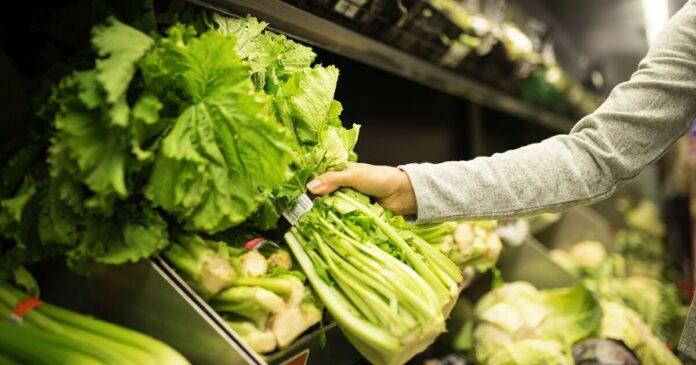
When Teralyn Pilgrim can’t decide whether something counts as food waste she sets herself the “Hungry Kid Test”.
Before tossing the offending food into the bin, she asks herself, “would I feel comfortable throwing that food away with a hungry child watching?”
If the answer is yes, for example if it’s banana or orange peel, it can go in the compost. If the answer is no, then it’s time to get creative and to reuse the food rather than throw it away.
It’s just one of the ways that the mother-of-three from Oregon, in the US, has transformed her kitchen into a zero-waste zone by eating, repurposing, pickling or freezing her leftovers and produce.
According to the charity Waste and Resources Action Programme (WRAP), UK households throw away 4.7 million tonnes of food that’s still fit for consumption every year. It means a family of four wastes an average £1,000 of food that could have been eaten.
But it’s not just about the money. Food waste is also a disaster for the environment – one of the biggest contributors to greenhouse gas emissions and climate change.
Teralyn was only shocked into changing her habits when she came across an article discussing the plight of children suffering from famine in Yemen, South Sudan, Nigeria and Somalia and she felt compelled to take drastic action.
“Even if I can’t change how much food the world wastes, it feels good to look at this problem and say – with absolute honesty – that I have nothing to do with it,” says Teralyn.
Here she shares her advice to see if you can waste less food, save money, live more sustainably and help out the planet too.
Store food in clear containers
The first step is getting organised, starting with a clear-out of your cupboards and fridge. “Throw out everything mouldy, freezer burned, stale or too old to eat,” Teralyn says.
When replacing the food that’s left, she suggests putting things you know you’ll use regularly, like flour, sugar and rice at the back of shelves, and items you’re more likely to forget about in the front. “Store food in clear containers and mason jars so that you can easily see what’s in them,” she adds.
Play Ready Steady Cook with the ingredients you already have
Before buying new ingredients from the supermarket, try some “shelf cooking”, says Teralyn. That means basing your meals on ingredients you already have in the fridge and pantry. “There are websites and phone apps that let you enter ingredients you have on hand and suggest what to make using those ingredients,” says Teralyn.“Examples include Allrecipes.com, Plant Jammer, Super Cook, Ready Set Dinner, Love Food Hate Waste, and Save the Food.”
Go food shopping like the French
This step isn’t only the most powerful, but also the easiest: simply don’t buy too much food. “When you limit how much you buy and eat what you have, there is no reason for food to reach its expiration date,” she says. In France, it’s common to go to the store once a day and only buy what you need until tomorrow.
Upcycle and reinvent your leftovers
Just because you cooked food one way doesn’t mean you have to eat the leftovers the same way. “A Sunday roast can become Monday’s roast beef sandwiches, Tuesday’s beef stew, and Wednesday’s beef pie,” says Teralyn. Other ideas include using leftover mashed potato to make gnocchi, and old bread to make bruschetta or bread and butter pudding.
Freeze your food properly
When used properly, the freezer can solve nearly all your food waste problems. “Bananas are getting mushy: freeze them and make smoothies later,” says Teralyn. “The watermelon you bought is too big to finish: make ice lollies. Half a casserole is sitting in the fridge: freeze it and there’s a delicious meal ready for later. Check the fridge every day to see if anything needs to be frozen.”
The way you prepare the food before freezing matters, too. “Cheese needs to be grated or it will be crumbly,” she says. “Mushrooms should be sautéed in butter first. Potatoes should be cubed, sliced, or grated.
“Before freezing vegetables, blanche them. ‘Blanche’ means dipping food in boiling water for anywhere from 30 seconds to a minute and a half and then putting it in an ice bath. The hot water will kill bacteria, mould, and fungi and stop enzymes from making the food lose colour, flavour, and vitamins.” Label and date everything you put in the freezer too.
How to reheat leftovers so they taste like they’re fresh
Reheating leftovers can be a fine art – get it wrong and you’ve got food that’s soggy, dry or overcooked, and it’ll put you off trying again, says Teralyn. “The microwave can only heat one inch into a dish. This is why you have to stir your food in the middle of cooking. For food you can’t stir, like lasagne and enchiladas, cut it into one-inch strips before reheating.
“If the food was fried, it needs to be toasted in the oven, put in the air fryer or refried to get crispy again. French fries need to either be refried or liberally coated in oil before being toasted.”
Steer clear of these storage mistakes
Properly storing your food can help it stay fresher for longer. Some produce emits ethylene gas as it ripens – and this gas can ripen other produce around it.
“So it’s best to keep the following foods separate from things you don’t want to be ripened: apples, apricots, avocados, cantaloupe, figs, honeydew, bananas, nectarines, peaches, pears, plums, onions, and tomatoes,” she says.
Other tips include:
*Storing asparagus, cut basil and coriander in a glass of water.
*Rinse leafy vegetables like lettuce, celery and broccoli thoroughly in water and wrap them in aluminium foil when they’re still dripping. This will keep vegetables crisp and make them last longer.
Enjoy the whole vegetable, from stalk to skin
Being waste-free means seeing the potential in every piece of fruit and veg, says Teralyn. “Stems, leaves, peels, stalks: everything that’s edible is food,” she says. “Potato peels are delicious roasted. Just drizzle with oil, sprinkle with salt, lay flat on a baking sheet, and bake at 200°C for 10 to 15 minutes. “Eat broccoli stalks. After you peel off the woody exterior, the inside flesh is delicious. You can dip it in ranch dressing, shred it for slaw, boil it with salt, roast it, stir-fry it, steam it, or just prepare it right alongside the florets.”
If all else fails… pickle it!
“If you have too much cucumber, you can soak the slices in old pickle juice,” says Teralyn. “They’ll stay fresh for ages. You can do this with other vegetables, too, like carrots, squash, okra, turnips, and red onions.”




















